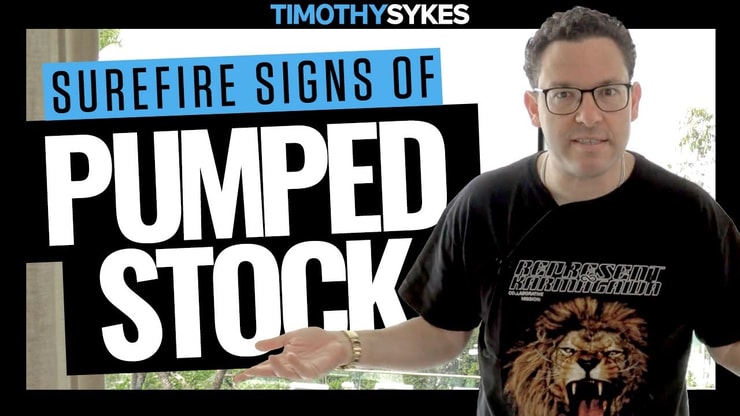If you’re still wondering whether penny stock pump-and-dumps are alive and well in 2025 — look no further than Jayud Global Logistics Ltd. (NASDAQ: JYD). This wasn’t just a quiet fade or a bad earnings miss. It was a full-blown 95% collapse in 24 hours, right after the stock hit its all-time high of $8 on April 1.
This pattern isn’t new. This isn’t an accident. It’s the same rinse-and-repeat penny stock manipulation I’ve been exposing for 20+ years.
If you’re getting deja vu, you’ve got a good memory. Here is my story on CLEU following the same pattern.
By April 2, JYD was trading under 50 cents. Let me say that again for the people in the back: from $8 to 46 cents. In a single session. Most of the damage? Done after-hours, when unsuspecting traders couldn’t react.
This was not a market correction. This was a calculated rug pull.
Let’s break it down so you don’t fall for the next one.
What Is Jayud Global Logistics (JYD)?
Jayud is a Shenzhen-based logistics company offering end-to-end cross-border supply chain services — think freight forwarding, customs brokerage, and warehouse operations. Over the past year, they’ve announced a series of overseas expansions, chartered air cargo routes, and acquisitions of logistics infrastructure in California.
Sounds impressive on paper. But behind the glossy PR is a company with:
- Negative free cash flow
- Hard-to-find financial filings
- No institutional investors
- A total lack of differentiation in a brutally competitive industry
That didn’t stop the hype machine from rolling, though.
How the JYD Pump Worked
JYD was a low-float Chinese logistics penny stock that traded under $1 for most of late 2024.
Then came the run.
From December through March, JYD climbed slowly on the back of vague PRs and acquisition news — but the real pump didn’t begin until late March 2025. That’s when the stock started going vertical.
It hit $8 on April 1, capping a 1,100% climb in 5 months.
Volume surged. Discord servers, WhatsApp groups, and YouTube “analysts” started pushing wild price targets — $13, $20, even $27. These were fake projections made using Fibonacci extensions (not kidding) by people either completely clueless… or deeply involved in the scheme.
Then the dump hit.
After-hours on April 1, the bottom fell out. By the next morning, it was already down 79%. By market close on April 2, it had lost over 95% of its value.
Just like CLEU, this was a pump with zero real support and an inevitable crash baked in.
What Made This Pump So Dangerous?
Here’s what raised every red flag in my book:
1. Skyrocketing Price With No Justification
Jayud started spiking in November when it regained Nasdaq compliance — which is only a catalyst in sketchy penny stock land. The company was losing money and burning cash. But instead of trading sideways or slipping, it skyrocketed.
2. Massive Insider Ownership
Insiders owned 72% of the float before the dump. That’s an unusually high figure. Combine that with a pump, and you’ve got to ask yourself — who’s really selling into this move?
More Breaking News
- Amazon’s Unexpected Surge: Insightful Analysis
- Surviving Trump’s Trade War: Top Penny Stocks to Watch Now
- HIVE’s Strategic Moves: Insights and Impacts
3. No Institutional Support or Analyst Coverage
Zero institutional buying. No major analyst coverage. No hedge fund holders. Why? Because the fundamentals are weak and the risk of manipulation is sky-high.
And yet retail traders were pouring their savings into it.
Victims Speak Out: “I Lost Everything”
Reddit and X have been flooded with horror stories from JYD bag holders:
- “I lost $7,000 overnight. Got invited to a WhatsApp group… they looked so professional.”
- “I sold my Tesla stock to go all-in on JYD. Lost $80K.”
- “I got pumped in a group supposedly run by a fake ‘Kevin O’Leary.’ They wanted screenshots of my trades. Total scam.”
- “I’m holding 700 shares. I’ll die with them.”
This is the human toll of a penny stock pump. Real people blew up their accounts because they didn’t know the warning signs.
On April 3, Jayud issued a cold, boilerplate statement:
“We do not comment on market activity. Please rely solely on our SEC filings.”
Translation? “You’re on your own.”
They didn’t deny anything. They didn’t explain anything. And they certainly didn’t apologize.
When a company says nothing while its stock loses 95% in a day — that’s all you need to know.
Lessons From the JYD Disaster
If you’re serious about surviving the penny stock jungle, learn from this mess.
1. Volume + No News = Scam
If a low-float penny stock starts spiking with no solid news or earnings, it’s almost always being manipulated. Especially if it’s based in China or has heavy insider control.
2. Don’t Trust “Stock Tips” on WhatsApp or Discord
These pump groups are professional scammers pretending to be sophisticated investors. They want your money — not your success.
3. Always Cut Losses Quickly
If you bought late in the JYD run and didn’t get out fast, you probably got crushed. My students know: Rule #1 is cut losses quickly. That’s how you stay in the game.
The system is rigged.
That’s why I sit in cash until I see a REAL opportunity—not some garbage manipulated penny stock.
Final Word: This Will Happen Again
Jayud Global Logistics (JYD) was just the latest in a long line of pump-and-dumps. CLEU, VERB, ENZC — the names change, but the playbook stays the same.
The real question is: Will you be ready when the next pump starts?
Or will you be the one holding the bag while the insiders cash out?
This is why I teach pattern recognition and risk management — not stock picking. Because penny stock scams aren’t going away. But with the right training, you can learn how to trade around them … and even take gains from the pump, before the dump.
Stay safe. Stay skeptical. Stay sharp.
👉 Join my free webinar to learn how to spot the next scam before it blows up your account.









Leave a reply